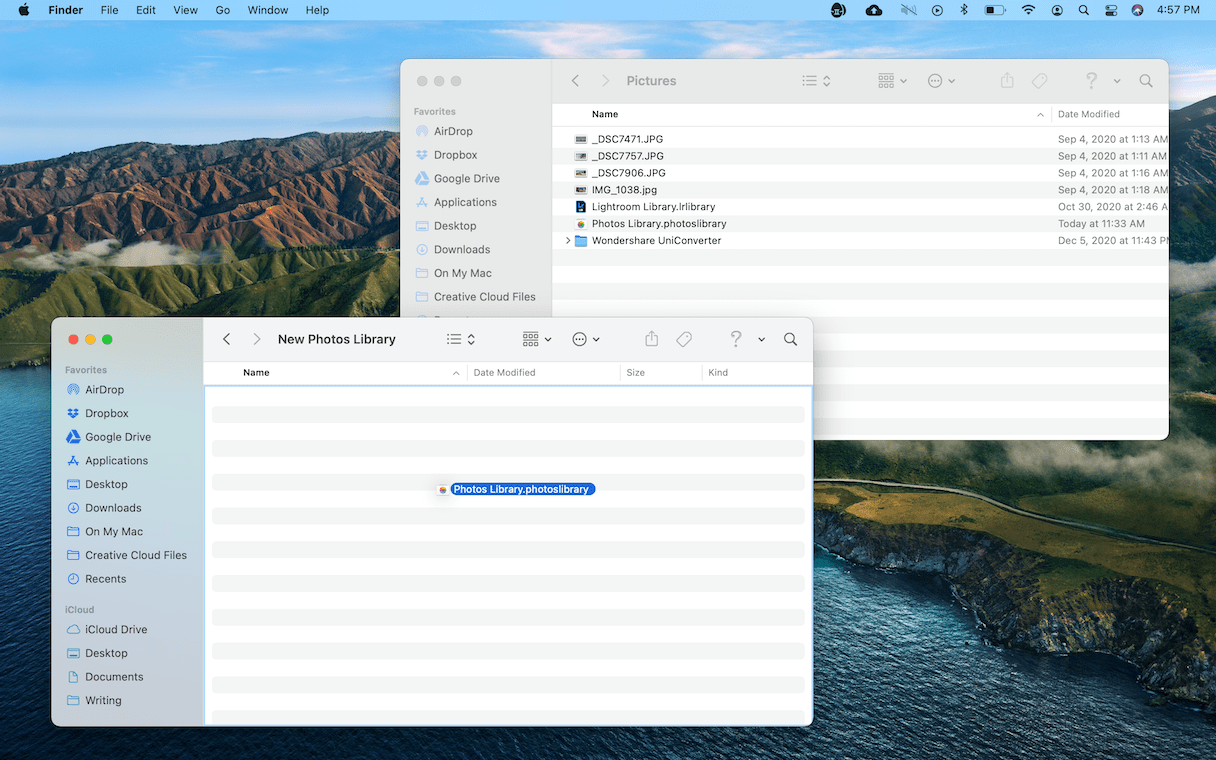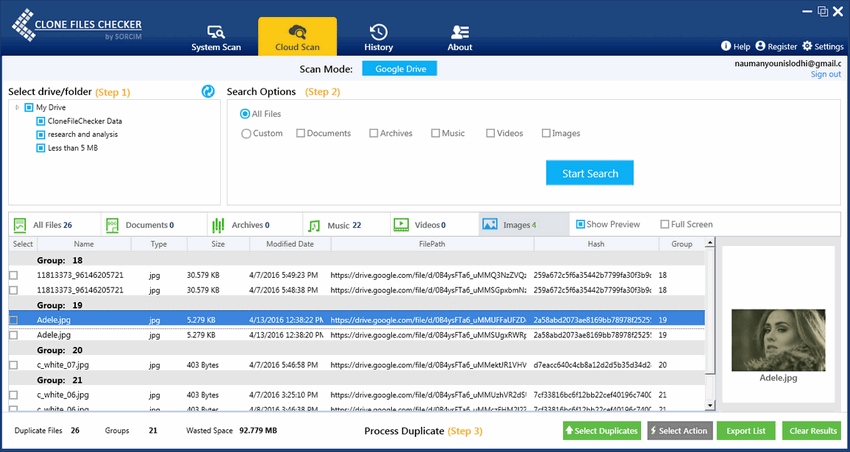Why should I keep my photos online?
Now, iPhoto Library stored inside your Dropbox folder by default. Now, when you add new photos into iPhoto Library or make any changes to existing photos or organize them, then it will automatically backed up to Dropbox. You have another option to sync iPhoto Library i.e 'Drag-and-drop'. Here you can simply drag your iPhoto Library from the. On Mac B, you should see the library appear in its Dropbox folder as Dropbox starts syncing the data across. Wait until the checkmark by the library turns green, indicating that Dropbox has finished syncing. Double click the library on Mac B to open it in Photos, which it will do happily, even though the library is still open on Mac A. After you open your library from its new location and make sure that it works as expected, you can delete the library from its original location. In a Finder window, go back to your Pictures folder (or whichever folder you copied your library from) and move Photos Library to the trash. How to transfer pictures from Photos app to Google Photos. You can’t simply drag your photos directly from the Photos app on your Mac into Google Photos on the web. First, you’ll need to export the photos from the Photos app. Step 1: Select the images in the Photos app for Mac that you wish to copy to Google Photos.
Photography has rapidly evolved because of smartphones. We take, save, and share more digital photos every day since it is so easy. That being the case, the need for an intuitive, efficient photo storage system has become that much more critical.
An online photo organizer helps you manage your digital image files and provide quick access to any photo when you need it. Using cloud storage to host your digital photo album won't just help you save disk space but also enhance access, security, and organization.
One place, any place
It is pretty tricky to locate a specific photo since, most of the time, they end up randomly scattered across countless folders on your computer.
For example, if you use Apple products, you probably have some photos synced from your iPhone in the Photos app. Then you have screenshots you've taken saved on your desktop and images you've found online saved in your downloads folder. Good luck when you need to find one specific photo.
Using cloud storage allows you to organize all of your photos in a centralized space that you can access from any online device.
Protect your memories
Old photos stored in family photo books are always at risk of being damaged or lost. Luckily, you can quickly digitize your physical photo collection with a doc scanner app and preserve them in the safety of the cloud. When you save your photos on Dropbox, you can rest assured that they'll always be available even if disaster strikes your computer or phone. You'll be able to access it from any operating system or device with an internet connection, even if the original photo or camera is lost.
Sharing is easy
Sharing photos with family and friends is also made easy with online photo management software. With Dropbox, you can easily share any file or folder even if the recipients don't have an account.
For example, on a family vacation, chances are everyone's going to be taking pictures on their own devices. A collaborative photo management service like Dropbox lets you and your loved ones synchronize photo albums across multiple accounts in shared folders. This type of family photo storage can help everyone contribute to and edit an album—from any device.
Save hard drive storage space
One of the key benefits of using the cloud, for photos or otherwise, is that it helps you save disk space on your devices, external hard drives, or memory cards. A single image file may not take up a lot of space, but the large number of pictures we take daily can quickly build up. Freeing up space on your device means it'll perform better and quicker.
What's the best way to organize photos online?

An online photo manager has its clear benefits. Still, you should establish a consistent, concise photo management system to make the most out of it. Follow these rules to ensure your photo library operates as efficiently as possible:
1. Clear the clutter
Before uploading anything to your online photo library, you should first get rid of everything you don't need. Go through all of the images you've saved and delete any unnecessary and duplicate photos before you start uploading. It's also a good idea to regularly audit your online library and remove unnecessary files, so you're saving space for your best photos.
2. Rename your files
Every professional photographer knows that a crucial step towards an efficiently organized photo library is to make sure your photos are well named. Instead of keeping 'IMG.1234.jpg' for example, you should rename each image using a consistent structure or format that provides important information about what's in the photo. You want to make sure you include enough information so that if you were to look at the file's name, you would have a good idea of what's in the photo without having to open it.
A reliable format for filenames would be to include the place or event where you took the photo and its date, 'Marrakesh_Dec 2019_01.jpg,' for example. You could be even more specific, like 'Marrakesh_Dec 2019_Medina Tour_01.jpg,' or include keywords that can act as identifiers.
3. Create folders
Once you've established a reliable naming system, it's time to figure out how to categorize and sort your photos. If they're all piled into a single folder, it will be a nightmare to find anything.
The most efficient method would be to create core folders separated by category or format, such as Photos, Screenshots, Downloaded Pictures, Design, etc. Then, within each of these wider core folders, you can begin to break it down by date, with subfolders for each year. Within those, you can create a subfolder for each month of the year. If you'd like, you can end the chain there or further break it down into folders for each event, activity, or place in that month.
For photographs specifically, a Year > Month > Event/Activity structure is most efficient:
My Photos > 2016 > January 2016 > Jamie’s birthday party > “Jamie & Jane dancing 09-01-16.jpg”
For non-photo images, you might not feel the need to include month-based folders. Instead, you may have other characteristics that can form subfolders:
Design > 2020 > Adobe Photoshop > Remote Working Poster.psd
Downloaded Images > Memes > GIFs > Rihanna laughing.gif
Easily import and manage photos with Dropbox
Device syncing
The Dropbox desktop app allows automatic syncing of images between your device and the cloud. Any time you save an image on your computer or phone, Dropbox will immediately back it up to your online library. Dropbox can also sync with other cloud storage services like Google Photos and Google Drive. With the desktop app, your Dropbox folder includes your cloud files and appears on File Explorer for Windows or Finder for Mac, just like your other folders.
Any time you add to, remove from, or edit in this folder, these adjustments will then update in your Dropbox account and any device connected to it. You can choose which folders or subfolders to back up certain photos within and which photos you want available offline.

Adding printed photographs
Considering the many benefits of online photo organizing services, you might now also want to digitize print photographs and add those to your online library. Fortunately, that's not as difficult as it may seem. You don't need to find a scanner to digitize print photos. These days you can do it simply using an iPhone or Android camera.
The Dropbox photo scanner app lets you easily scan and upload documents in PDF or PNG file formats and save them directly to your Dropbox. Several helpful photo editing tools and features for resizing, cropping, and adjusting your scans are available. Optical Character Recognition (OCR) technology allows you to search for text within a scanned document.
Dropbox simplifies photo searching
While there's no one-size-fits-all image organization method, following the tips described above makes it easier than ever to locate the photos you need. Also, they will be available whenever you need them, from wherever you are.
But, even with a great system, navigating folders for one specific photo can be time-consuming. With Dropbox Professional and Dropbox Business, you can search your photos based on their content. When you upload new photos, content is identified in the images and stored in their metadata. Then, when you search a keyword, results are displayed that contain content matching that keyword or related to that keyword. For example, you can search for “clothing” to see all images of clothing (and images related to clothing) in your Dropbox account—even if “clothing” isn’t in the file name.
Move Mac Photos Library To Dropbox Windows 10
The Photo Booth app lets you take selfies and record videos through a Mac’s built-in camera or a third-party camera. But the app’s simple interface can make it a little tricky to figure out how to extract images.
There are three ways:

• Select an image or video in the row below the main window, and then Control-click (or right click on your mouse) and select Export.
• Select one or more images or videos (hold down Shift to select a range or use Command to add or remove) and drag into the Finder.
• Go to your home directory (in the Finder, choose Go > Home) and open the Pictures folder. Control-click (or right click) the Photo Booth Library and choose Show Package Contents. Open the Pictures folder within. (If you’ve used effects on an image, the unmodified version is in the Originals folder.)
If you want to delete media stored in Photo Booth, you can select one or more items, Control-click on one of them, and choose Delete. Or you can empty them out of the library in the Finder.
This Mac 911 article is in response to a question submitted by Macworld reader Alison.
Ask Mac 911
We’ve compiled a list of the questions we get asked most frequently along with answers and links to columns: read our super FAQ to see if your question is covered. If not, we’re always looking for new problems to solve! Email yours to mac911@macworld.com including screen captures as appropriate, and whether you want your full name used. Every question won’t be answered, we don’t reply to email, and we cannot provide direct troubleshooting advice.
Note: When you purchase something after clicking links in our articles, we may earn a small commission. Read ouraffiliate link policyfor more details.
Move Mac Photos Library To Dropbox Without
- Related: